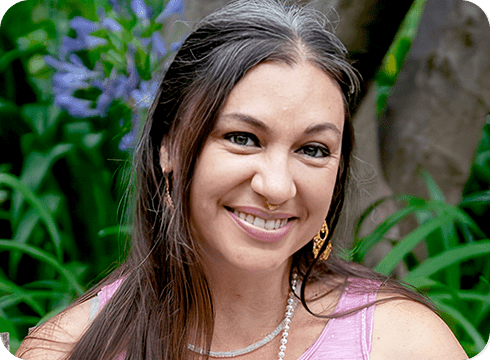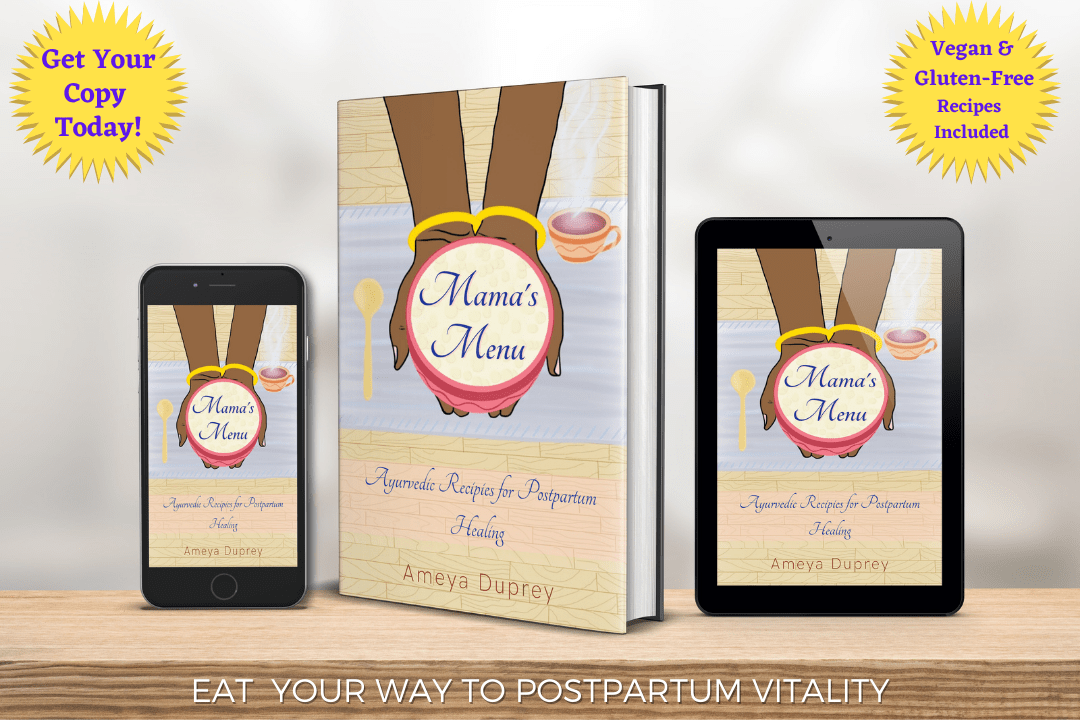Rice Porridge
The #1 Must-Have Recipe After Birth
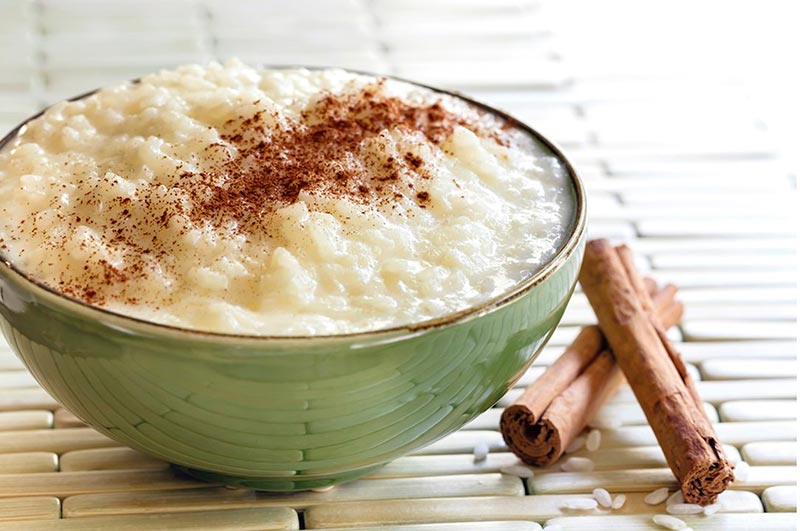
Rice porridge, also known as rice congee, is a traditional dish enjoyed in many Asian countries, especially during times of illness or recovery. However, it is not just a comforting meal for the sick – rice congee is also widely used in postpartum healing around the world, and is the perfect dish to kickstart your postpartum recovery during the first few days after birth.
A History of Rice Porridge in Asia
China & Taiwan

In Asian cultures, particularly in China and Taiwan, rice congee is considered an essential part of the postpartum diet. New mothers are encouraged to consume large quantities of rice congee in the days and weeks following childbirth to help replenish their bodies after the strain of labor. The warm and nourishing qualities of rice porridge are believed to help support the healing process and promote milk production for breastfeeding.
In Chinese medicine, rice congee is thought to be easy on the digestive system, making it an ideal food for postpartum women who may be experiencing weakness or digestive disturbances. The simple ingredients of rice, water, and sometimes a bit of ginger or other herbs are gentle on the stomach and help to provide vital nutrients and energy to the new mother.
“Congee is a traditional Chinese remedy that can aid in postpartum healing by providing nourishment and comfort”
–Dr. Linda Lancaster
Japan
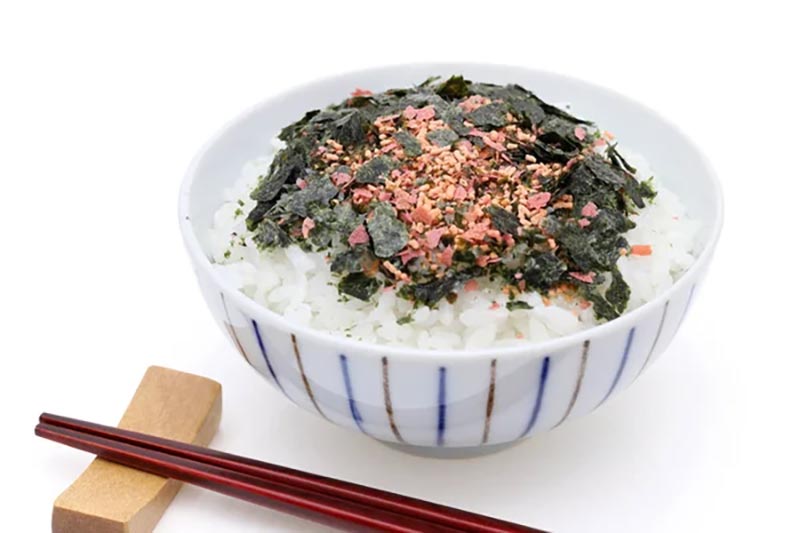
In Japan, okayu is a type of rice congee that is commonly consumed during the postpartum period. It is often eaten with pickles, seaweed, or furikake (Japanese seasoning) to add extra flavor and nutrients. Okayu is considered a soothing and comforting food that helps to restore strength and vitality to new mothers.
Indonesia
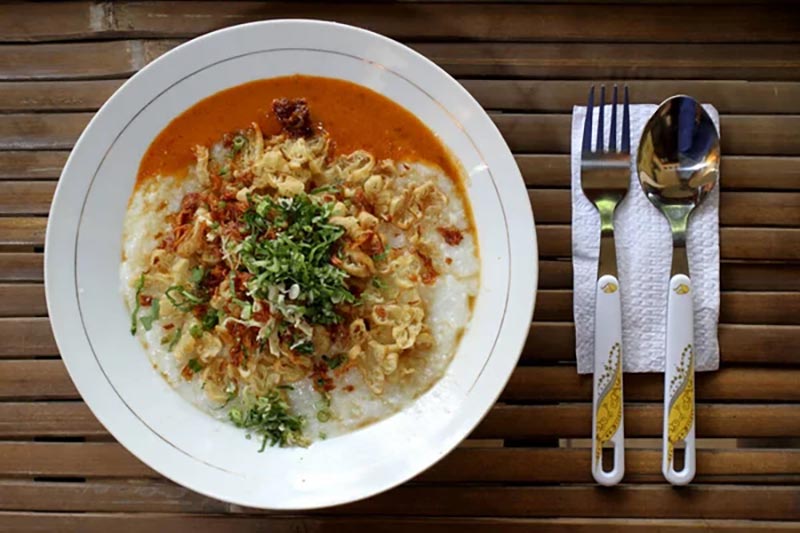
In Indonesia, bubur ayam is a type of rice congee that is often consumed by postpartum women. It is made with chicken broth, rice, and various herbs and spices, and is believed to help speed up the recovery process and promote healing in the postpartum period.
India
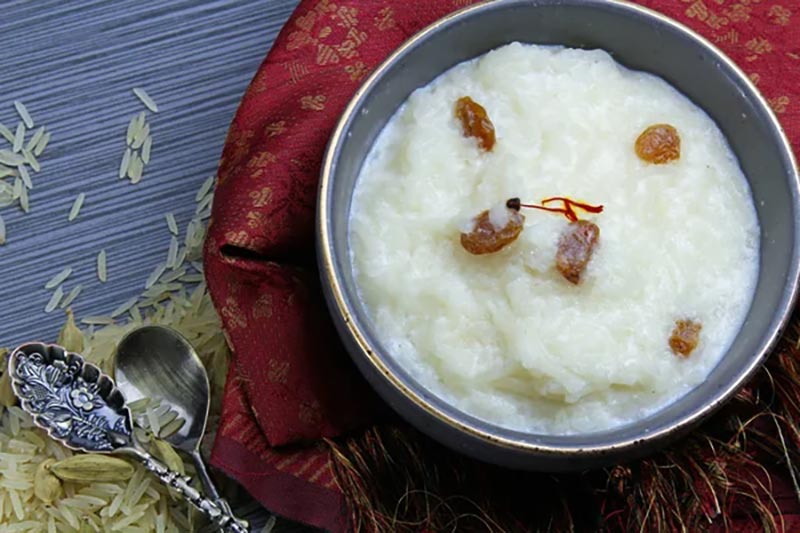
In the Ayurvedic tradition of India, rice porridge is made with an abundant amount of ghee and spices, like ginger, clove, cardamom and cinnamon, as well as iron rich sugar like jaggery. The combination of healthy fats, raw sugar, and digestive spices, help to nourish the new mother’s digestive system, lubricate her internal organs, while also offering quick, usable energy. This is the type of congee I am most familiar with, and I have all of my mamas make it as their first meal after giving birth. (I even included my recipe in my cookbook Mama’s Menu because it is such a fundamental piece of resetting a new mother’s digestion.)
Kitchari, a similar dish to rice congee made from rice and lentils, is regularly eaten by postpartum women in India. It is easy to digest and can be seasoned with ghee and spices like cumin, turmeric, and ginger to add flavor and enhance its healing properties. Kitchari is believed to help balance the body’s energy and aid in the recovery process after childbirth.
“In many cultures, rice congee is the go-to nourishment for postpartum recovery, offering healing properties and ease of digestion.”
-Dr. Tieraona Low Dog
Nowadays, using rice congee for postpartum healing isn’t limited to solely Asian countries. More and more people from Western countries are looking to the East to learn how to heal from birth using traditional postpartum wisdom practices and diet. Postpartum rice porridge is a food that easily bridges the gap between cultures, becoming a universal nourishing comfort food that all can enjoy. Its gentle qualities make it an ideal food for new mothers who are looking to replenish their bodies and support their recovery after childbirth.
Benefits of Postpartum Rice Porridge
There’s a reason why rice porridge is the #1 must-have recipe to eat after birth. Below you can learn the many benefits you will enjoy during your postpartum recovery and breastfeeding journey by eating this nourishing dish for the first few days after birth.

-
Easy to digest: Rice congee is a gentle and easily digestible food that is the perfect first food for postpartum mothers in order to rekindle their digestive fire.
-
Nutrient-rich: Rice porridge is made with white basmati rice, which is a good source of carbohydrates and provides sustained energy for breastfeeding mothers. Rice congee can also be easily customized with a variety of healthy fats, sweeteners, herbs and spices.
-
Hydrating: Postpartum mothers need to stay hydrated to support breastfeeding and aid in their recovery. There is a lot of fluids that are lost during the birth and through breastfeeding, which effectively depletes and dehydrates the tissues. Rice congee is a nourishing and hydrating food that helps nourish a new mother’s depleted tissues, keeping them well hydrated as they recover.
-
Promotes healthy lactation: Rice congee is often recommended as a lactation-promoting food due to its high carbohydrate content. Carbohydrates are essential for energy production, which is important for milk production. In addition, postpartum rice porridge will improve the quality and digestibility of the new mother’s breast milk, helping the newborn to avoid gas and baby colic.
-
Comforting and soothing: In many cultures, rice congee is considered a comfort food that is often recommended for postpartum mothers. It is warm, nourishing, and easy to eat, making it the perfect choice for mothers who may be feeling tired or overwhelmed.
-
Easy to prepare: The simplicity of rice porridge makes it an ideal choice for new mothers who may not have the time or energy to prepare elaborate meals. With just a few basic ingredients – rice, water, spices, and ghee – a nourishing bowl of rice congee can be whipped up with little effort.
Overall, rice congee is a nutritious and soothing food that can support postpartum healing and breastfeeding. It is easy to prepare, customizable, and can provide a range of health benefits for new mothers during this special time.
“Rice congee is a gentle and easy-to-digest dish that provides essential nutrients for postpartum healing.”
-Dr. Aviva Romm
Preparing Rice Porridge for the Birth and Beyond
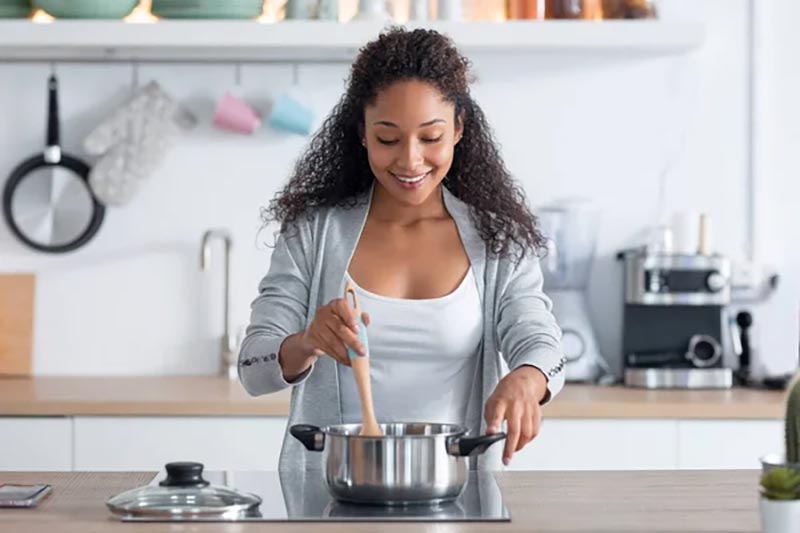
Rice Porridge Preparation Hack

Something that I recommend to my pregnant mama clients that want to be as prepared as possible for the birth and beyond, to prepare dry mixes of some of my postpartum recipes in advance. The first and foremost recipe that should be included is this postpartum rice porridge recipe. That way, all you have to do is throw everything into the slow cooker and turn it on. No fussing with recipes, measuring cups and spoons when you are distracted by the onset of labor or having a newborn to take care of.
What you’ll need:
-
Measuring cups and spoons
-
Ziploc-type sandwich bags and/or jars
-
Labels or masking/painters tape
-
Black fine marker or pen
-
Dry ingredients in this recipe
Instructions:
-Decide how many recipes of rice porridge you want to make.
-Measure the basmati rice and add to the sandwich bag (1 recipe worth per bag).
-Label the sandwich bag “rice porridge”.
Add instructions onto the label to say:
1. Rinse rice 3 times and drain
2. Add 8 cups of water, ½ cup of ghee/sesame oii, and the contents of the rice porridge spice mix to a slow cooker.
3. Cook for 6-8 hours.
4. Serve hot.
-Measure out the sugar and spices for each recipe and add to a separate sandwich bag. (You can get the recipe below, or for this recipe and many more, check out my cookbook Mama’s Menu!)
-Label the spice/sugar mix “rice porridge spice mix”.
-Repeat for as many times as desired.
This is a nice activity to add to your baby shower/blessing way. By having friends and family involved in preparing your healing meals after birth, they cana add their loving energy to your food which will help you feel even more nourished after birth.
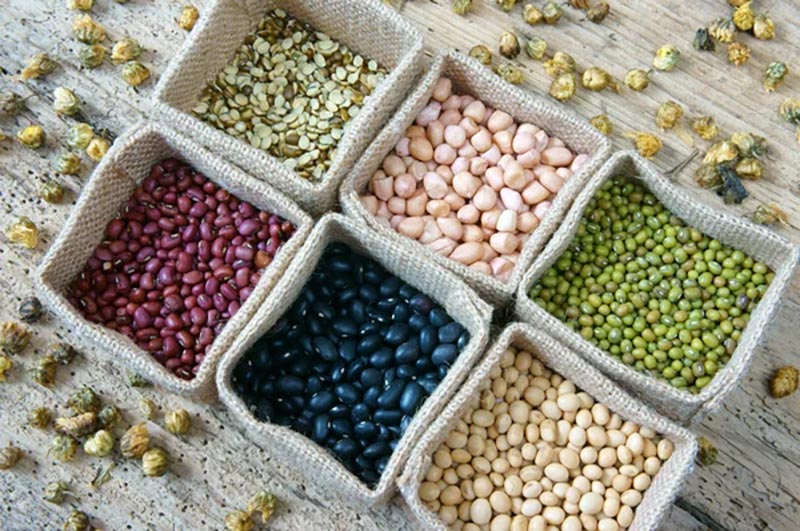
New Mother’s Rice Porridge Recipe
Hot, soft, oily, sweet and spicy, this rice pudding is deeply nourishing as well as comforting. It not only soothes the nerves, but also nourishes the tissues, stimulates digestion, and builds a healthy breast milk supply. This rice porridge is medicine for mamas! Enjoy!


Ingredients
- 8 C water
- 1 C basmati rice
- 1 1/2 C coconut sugar, sucanat, or jaggery
- 1/2 C ghee or sesame oil
- 2 tsp ginger powder
- 1 tsp cinnamon powder
- 3/4 tsp cardamom powder
- 1/2 tsp clove powder
- 1/2 tsp of black pepper
- 1/2 tsp turmeric powder
- pinch of cayenne (optional)
Instructions
Slow-Cooker
- Rinse rice several times until the water runs clear.
- Add rice, ghee/oil, spices, and water to the slow cooker.
- Set to “low”and cook with the lid on, for 6-8 hours.
- When the consistency is gelatinous, use a whisk to stir the porridge.
- Keep on low heat all day and serve hot when desired.
Insta-Pot
- Rinse rice several times until the water runs clear.
- Add rice, ghee/oil, spices, and water to the Instant-Pot.
- Place cover on Instant Pot, lock, and set to high pressure for 30 minutes.
- Once finished cooking, do not use the pressure valve to release pressure, allow the time needed to let the pressure release naturally.
- Once the pressure is released, unlock the lid and open.
- Use a whisk to stir the porridge and make a creamy and even consistency.
- Keep on the heat all day and serve warm when desired.
Vita-Clay
- Rinse rice several times until the water runs clear.
- Add rice, ghee/oil, spices, and water to the Vita-Clay cooker.
- Set to “stew” and cook with the lid on, for 4 hours.
- When the consistency is gelatinous, use a whisk to stir the porridge.
- Keep on the “warm” setting all day and serve hot when desired.
Stove-Top
- Rinse rice several times until the water runs clear.
- Bring water to a boil and add rice. Reduce heat to a simmer.
- Cook with the lid on, stirring occasionally for several hours.
- When the rice begins to thicken, add sugar, spices and ghee.
- When the consistency is gelatinous, take off heat and serve hot.
***It is very important to cook this dish long enough that the rice actually breaks down and loses its form***
**This recipe is gluten-free and vegan**
PREP TIME 5 minutes
COOK TIME 30 minutes-8 hours (depending on method)
TOTAL TIME 1 hour – 8 hours (depending on method)
Course: Main meal for first 3 days after birth
Ready to take your postpartum diet to the next level of healing?
Mama's Menu: Ayurvedic Recipes for Postpartum Healing will guide you step-by-step through each phase of your postpartum diet with carefully curated recipes that are both delicious and optimized for your postpartum recovery and breast milk production. Buy your copy now!
 Let’s Connect
Let’s Connect 
Connect with me on social media for postpartum recovery and healing tips.
